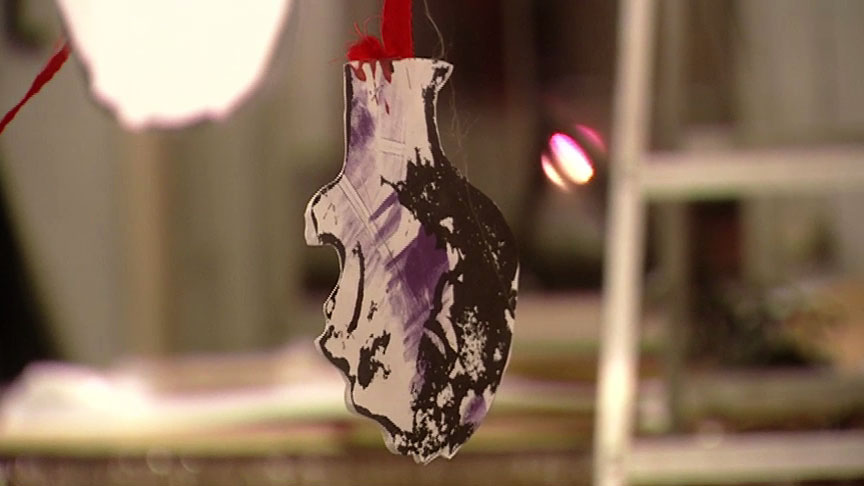
Production still from the ART21 Art in the Twenty-First Century Season 4 episode, Protest, 2007. © ART21, Inc. 2007.
In last year’s November/December issue we investigated ideas of unrest and revolution, and the ways art can and has innovated in the name of change. The months that followed saw huge leaps forward in the fight for same-sex marriage (victorious nationwide in June!), but gun violence and incensed racism has skyrocketed. When it feels like we’re taking two steps back for every one step forward, do all artists have a social responsibility to engage with injustice?
We’re revisiting the need for revolution in this issue: Revolution Part II, beginning with a list of ten artists who are using their work to challenge institutional racism, homelessness, war, sexism, climate change, xenophobia and more.
Kerry James Marshall: “Black Romantic”
From the series ART21 Exclusive
“If black art is seen as uncritical, where does the weakness in its criticality reside? And if you can identify that then can you resolve whatever that weakness is and bring that same kind of work up to a level, into a place where it has to be considered differently than it commonly is – where it can’t be just dismissed?”
Krzysztof Wodiczko in the “Power” Episode
From the series ART21 Art in the Twenty-First Century
“This type of projection brings more opportunities for more people to join each other in an attempt to speak up and open up and share in public space, something that is usually relegated to [the] private domain… They eventually develop some trust to break the code of silence to open up and speak about what’s unspeakable.”
Doris Salcedo: Istanbul
From the series ART21 Exclusive
“I wanted to make a topography of war that was so embedded, it was really inscribed in everyday life… What I’m trying to get out of this piece is that element that is common in all of us.”
Kimsooja: “A Beggar Woman” & “A Homeless Woman”
From the series ART21 Exclusive
“I wanted to question to myself again what that action really means, and whether I can be that lowest position and feel and understand their position… My body becomes like a stone on the street.”
Ai Weiwei: New Communication
From the series ART21 Exclusive
“We are completely handling a new human condition. How to express yourself and how to make this kind of ‘new communication.’ The technology for the free exchange of information, and all those have become so advanced. It changes so fast. So I think artists should be more aware of the change, and have yet to really enjoy this new character of the time.”
Margaret Kilgallen: Heroines
From the series ART21 Exclusive
“I especially hope, you know, to inspire young women. Because I often feel like so much emphasis is put on how beautiful you are, and how thin you are, and not a lot of emphasis is put on what you can do and how smart you are. I’d like to change the emphasis of what’s important when looking at a woman.”
Maya Lin: Disappearing Bodies of Water
From the series ART21 Exclusive
“The discussion was out of how much damage we were doing as a species to the rest of the planet. It’s really personal and I love the environment. I love the world around us.”
Nancy Spero in the “Protest” Episode
From the series ART21 Art in the Twenty-First Century
“I guess maybe my art can be said to be a protest. I don’t know if it’s railing against the world or something, but I am protesting. And as an artist, I’m privileged to create things the way I think that they should be… The war paintings are certainly a protest because it was done with indignation.”
Tania Bruguera: “The Francis Effect”
From the series ART21 Exclusive
“And I think it’s interesting because a lot of people know it’s impossible. Like they say, ‘Well, this is impossible.’ But the impossible is only impossible until somebody makes it possible.”
Glenn Ligon: Layers of Meaning
From the series ART21 Exclusive
“The irony of this march perhaps was that black women were encouraged to absent themselves from work, but not to attend the march as full participants. When I started to think about making silkscreen paintings using images of the march, this kind of notion of absence or disappearance with women was something I was interested in, and something I tried to find in the images themselves.”




Pingback: Letter from the Editor: Unending Revolution | ART21 Magazine